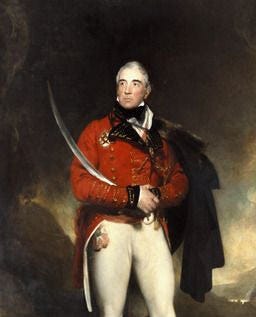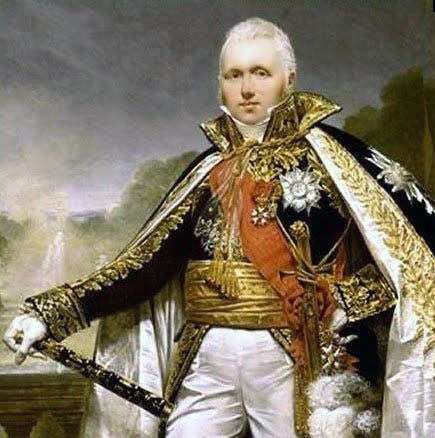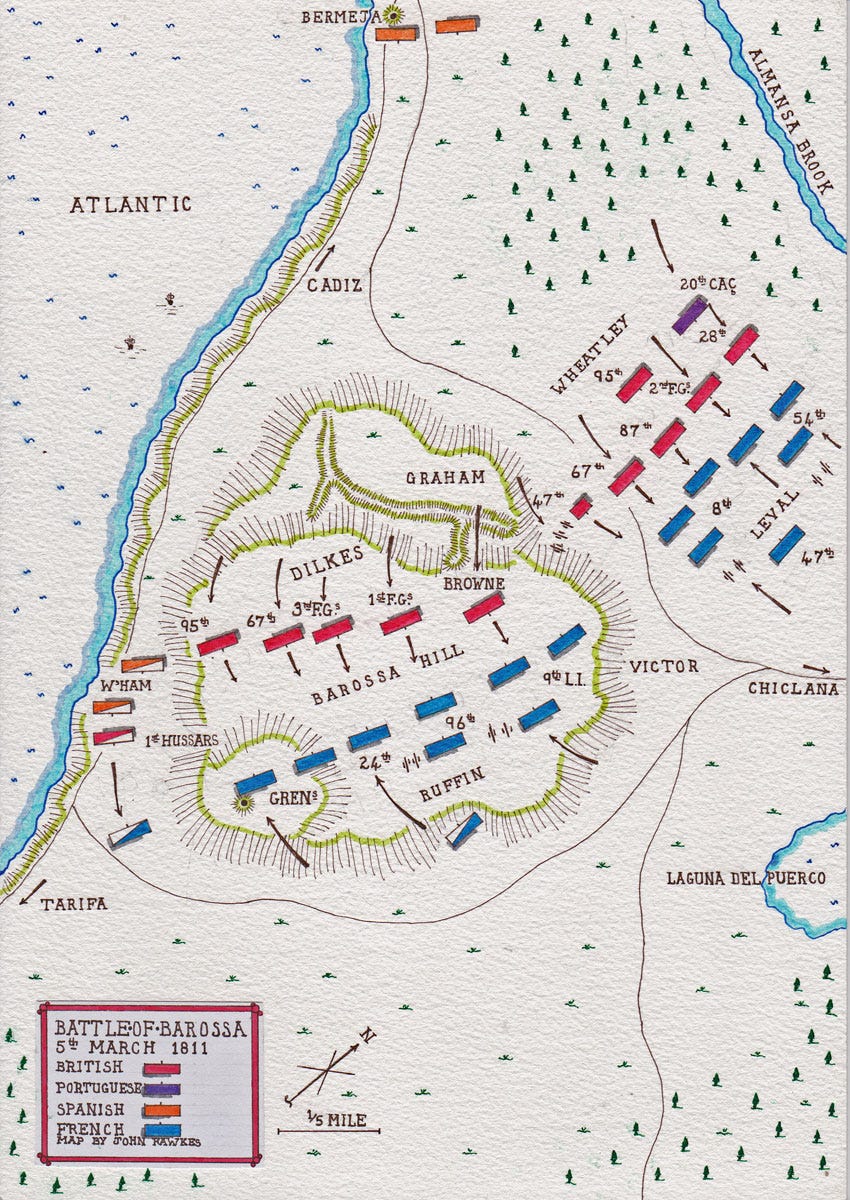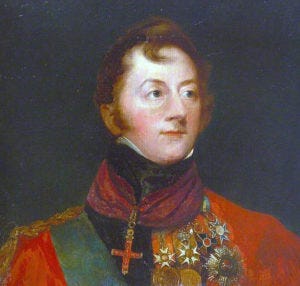The Eagle Catchers: the 87th Regiment of Foot and the Capture of the French Eagle at the Battle of Barrosa, 5 March 1811.
During the Napoleonic Wars, the French Imperial Eagle held its place as the supreme standard within the army – it mirrored the ancient roman eagle standards in their importance, and to lose one in battle was a grave thing indeed. During the Peninsular War, one such eagle was lost at the Battle of Barrosa at the hands of an Anglo-Iberian Force under the command of Manuel Lapeña and General Thomas Graham.



The Battle of Barrosa, 5 March 1811, saw the French, under Marshal Victor, attack the Anglo-Portuguese-Spanish forces which were trying to raise the Siege of Cádiz. An allied force had been shipped south of Cadiz to try and attack the French siege forces from the rear and relieve the city. Victor was aware of these movements however and was able to plan accordingly. The allied relief effort failed, mainly because of the incompetence of General Lapeňa, who was in overall command. The allies were relocating into the city of Cadiz itself when the Anglo-Portuguese rear-guard under Lieutenant General Graham came under French attack.
Abandoned by his Spanish Allies, who thought it best to continue the retreat and abandon the favourable ground of Barrosa Hill, Graham was forced to fight with a French force significantly larger than his own. He managed to successfully send Victors troops running thanks to the ability of his troops who bested their opponents in bravery as well as efficiency. One such standout on the day was the 2nd Battalion of the 87th Regiment of Foot, an Irish infantry unit.
After Graham ordered much of his forces to advance against the French forces in their strong position in the heights of Barrosa, Marshal Victor seized the opportunity to take the enemy flank and attack their rear-guard. Graham received warning of such a move from local militias and he redeployed his left wing under Wheatley reinforced by Portuguese troops.
Graham had the 87th under the command of Hugh Gough line up along the edge of a wooded area and take aim at the French columns under Jean-François Leval as they made their advance. Leval had not anticipated encountering any British troops as early as he did so had his regiments drawn up in marching order when they were attacked by skirmishers.
The 87th opened volley fire picking off large amounts of the French infantry while they slowly formed into lines. From 60 yards out the 87th were ordered to continue advancing, stopping only to unload musket rounds and finally ending in a bayonet charge. One witness of the battle claimed the 87th were able to fire volleys three times faster than the opposing French 8th Regiment.

As they closed in, the regimental motto of ‘faugh-a-ballagh’ a linguistic mess, meant to be Irish for ‘clear the way’ could be heard across the fields of Barrosa as British and French troops collided. The battle between the 87th and the French 8th centred around a fight for the French standard - its staff surmounted by an eagle adorned with gold laurels. Two men are known to have led the struggle, Ensign Edward Keogh was initially engaged with the standard bearer, only managing to get a hand on the shaft when he was shot, bayoneted and killed. Sergeant Patrick Masterson took over and, after killing several men, wrenched the Eagle from the dying hands of its bearer, Lieutenant Gazan. Seven French soldiers were killed before Masterson secured the eagle for the 87th, famously proclaiming: ‘Bejabbers, boys, I have the cuckoo!’
In the confusion of hand to hand fighting, the 87th were nearly flanked and overrun by another regiment of French infantry. Gough was able to instil a bit of order and rally the right wing of the 87th to turn about and face the French 45th. Luckily for them though, the reinforcing French troops were so unnerved by the savagery of the 87th that they turned and fled the field of battle before an engagement occurred.
Numbers vary but it is suggested that the French 8th regiment lost roughly 50% of its manpower in the engagement, about 726 men - from efficient musket volley fire, to being hacked down in a melee charge by the 87th. On the flip side, the 87th lost only 128 of about 722 men. Masterson was awarded a battlefield commission and more generally, the 2nd battalion of the 87th earned high praise for their part in the battle:
'General Graham met us on return, shook hands with Colonel Gough, halted the Regiment and thanked them for deciding the fate of the day.'
Following the Battle of Barrosa, the 87th Regiment was recommended to the Prince Regent, who awarded them the title of ‘Prince of Wales’ Own Irish Regiment’ and directed that they wear an eagle on their colours and appointments. They from this point on, began to be known as the Eagle Catchers. The 87th remained the Prince of Wales’ Own until reforms in the late 19th century saw a number of Irish regiments become amalgamated into the Irish Fusiliers.
The battle itself proved an allied victory, but the campaign was a loss. With the refusal of Lapeña to reinforce Graham, before, during and even after the French fled - they were unable to capitalise on the victory and relieve the entire siege of Cadiz. Victor was able to reinforce his previous positions following the allied retreat and thus the outcome saw both sides claiming victory, the British for having routed the French and inflicting greater causalities, and the French for having maintained their positions.
The Battle of Barrosa is but one example of an Irish regiment or battalion standing out in the field of battle for one of a number of imperial powers. From Britain to France, Spain and America - everywhere you look you will find Irish troops marked for the valiant bravery in the face of battle. Sergeant Masterson, like Corporal James Graham at Waterloo is but one microcosm of this Irish bravery in battle during the Napoleonic Wars.
If you like my work and want to say thanks, or support me in another way, you can buy me a coffee! Nothing is expected, but any support is greatly appreciated! https://www.buymeacoffee.com/ruairiaor
Further Reading:
Grant, Philip, A Peer Among Princes – the Life of Thomas Graham, Victor at Barrosa, Hero of the Peninsular War (2019).
Edward Fraser, The Soldiers who Wellington Led (1913).
Charles Esdaile, The Peninsular War (2002).







That battle map brings back memories of being a young American Civil War buff & visiting Gettysburg and Antietam with my family.